As you can see in the picture the middle cell has a UILabel that consumes two lines, but the text is actually a single line. It seems that if the text needs only few characters to create a new line, iOS assumes that it already has 2 lines. This is odd.
This is how I create the label:
self.titleLabel.lineBreakMode = .ByTruncatingTail
self.titleLabel.numberOfLines = 0
self.titleLabel.textAlignment = .Left
The constraints are set once:
self.titleLabel.autoPinEdgeToSuperviewEdge(.Top)
self.titleLabel.autoPinEdgeToSuperviewEdge(.Leading)
self.titleLabel.autoPinEdgeToSuperviewEdge(.Trailing)
self.titleLabel.autoPinEdgeToSuperviewEdge(.Bottom)
The weird thing is, when the table is scrolled so that the odd cell disappears and scrolled back again it has its normal height. After scroll:

Any ideas whats wrong? I am using swift, xcode6.1 and iOS8.1
TableViewController:
override func viewDidLoad() {
super.viewDidLoad()
self.tableView.registerClass(CityTableViewCell.self, forCellReuseIdentifier:"cell")
self.tableView.rowHeight = UITableViewAutomaticDimension
self.tableView.estimatedRowHeight = 52
}
override func tableView(tableView: UITableView, cellForRowAtIndexPath indexPath: NSIndexPath) -> UITableViewCell {
if let cell: CityTableViewCell = tableView.dequeueReusableCellWithIdentifier("cell") as? CityTableViewCell {
// Configure the cell for this indexPath
cell.updateFonts()
cell.accessoryType = UITableViewCellAccessoryType.DisclosureIndicator
if indexPath.row == 1 {
cell.titleLabel.text = "Welcome to city 17, Mr. Gordon F."
} else {
cell.titleLabel.text = "Lamar!!!"
}
// Make sure the constraints have been added to this cell, since it may have just been created from scratch
cell.setNeedsUpdateConstraints()
cell.updateConstraintsIfNeeded()
return cell
}
return UITableViewCell();
}